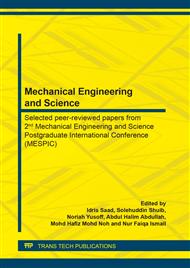p.180
p.187
p.193
p.209
p.219
p.230
p.238
p.253
p.268
Process Improvement at Automotive Assembly Line Using Line Balancing and Lean Manufacturing Approach
Abstract:
The aim of this study is to analyze the existing production line in the automotive industry and proposed a layout of improved production line in the manufacturing process and obtain the optimum rate of production time. Thus, line balancing method and Yamazumi Chart was utilized to analyze the current and proposed production line. The collection of the data of the existing production line was conducted at one of the automotive company in Malaysia. From the analysis of current production line, two improved layout were proposed and evaluated. The proposed layout was selected based on a balanced production line and ability to meet customer demand. A balanced production line will ensure smooth process and eliminate wastage during operation
Info:
Periodical:
Pages:
268-274
Citation:
Online since:
June 2020
Keywords:
Price:
Сopyright:
© 2020 Trans Tech Publications Ltd. All Rights Reserved
Share:
Citation:


